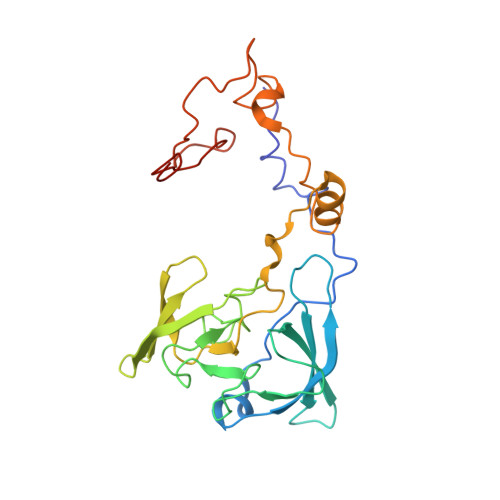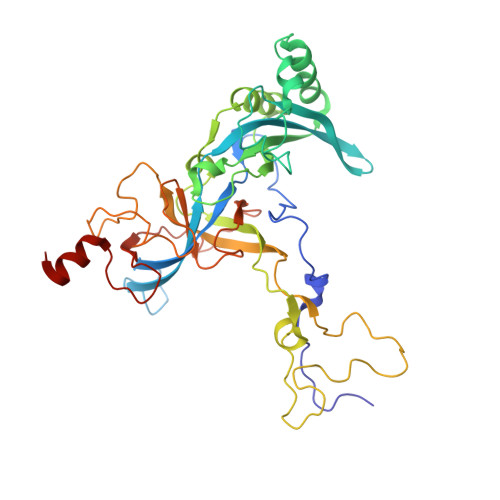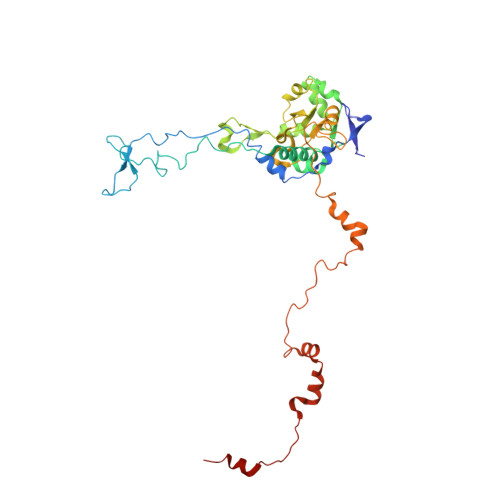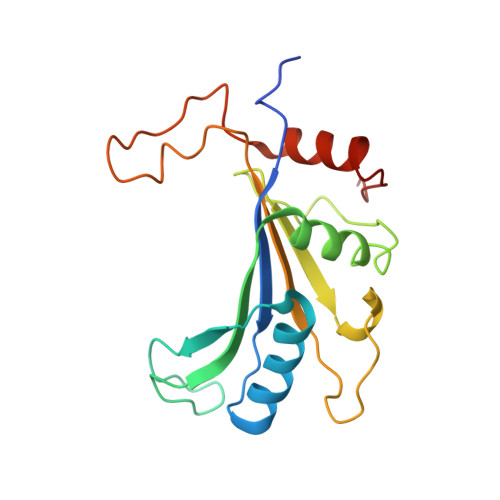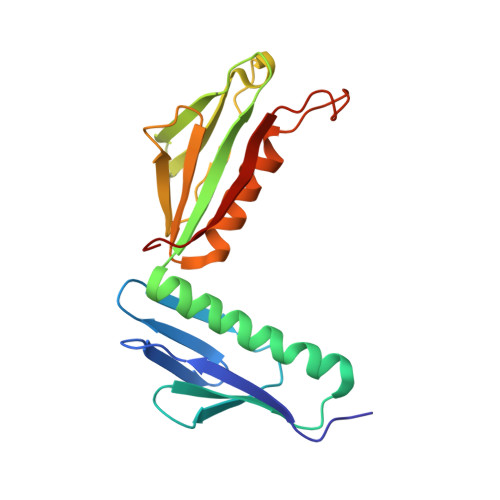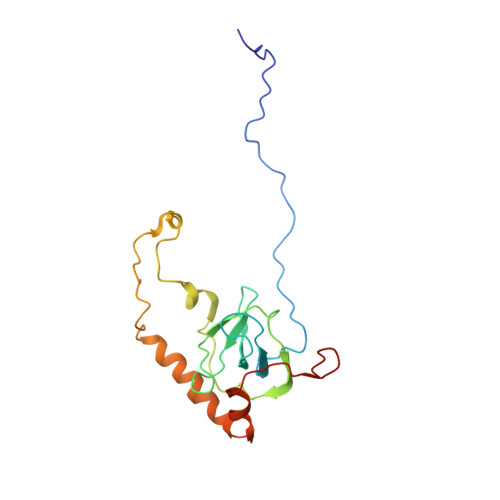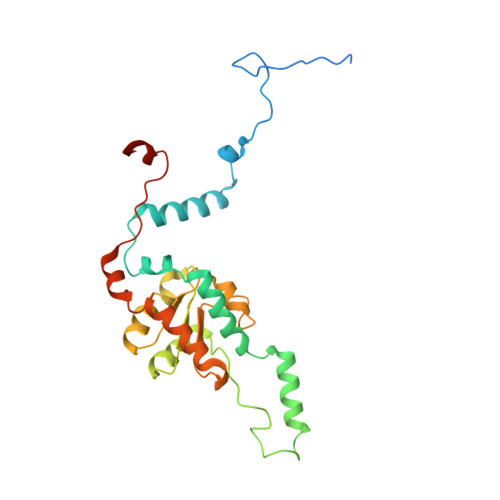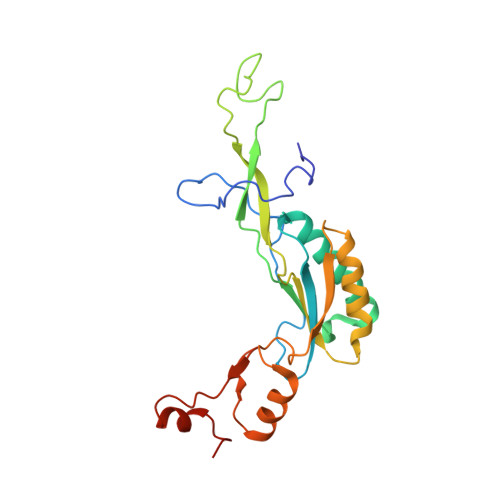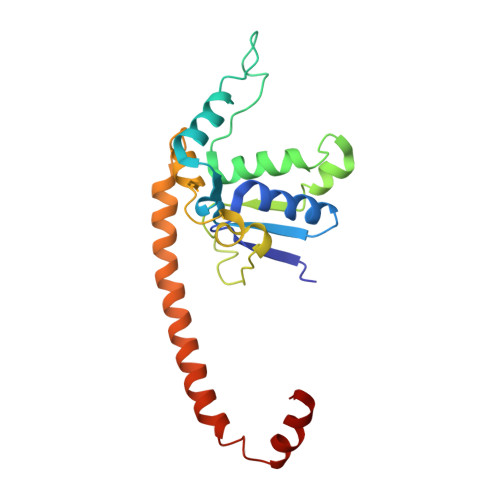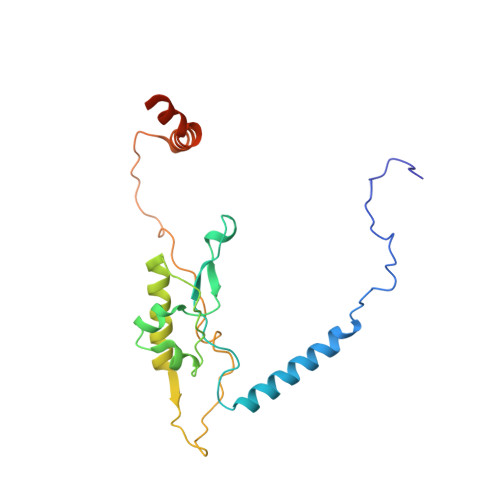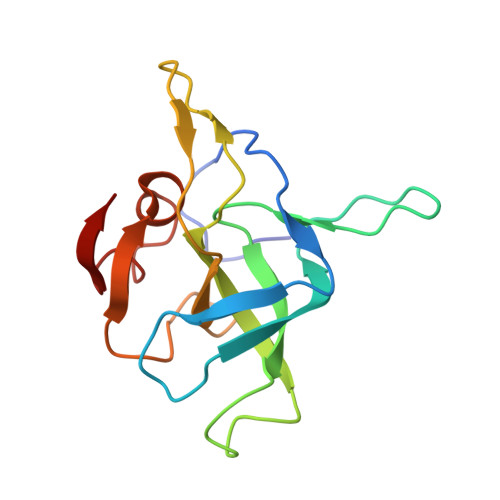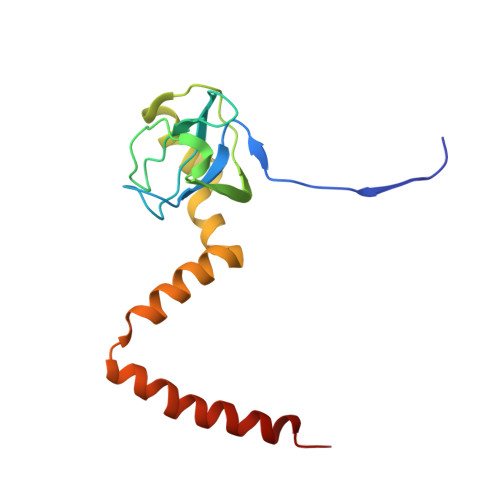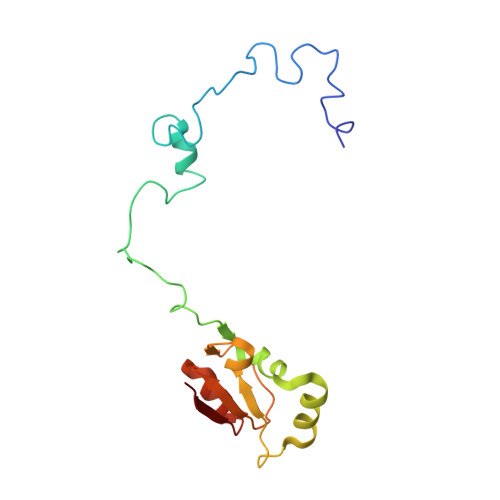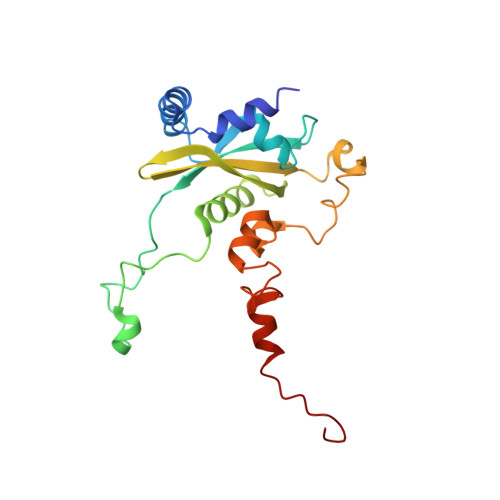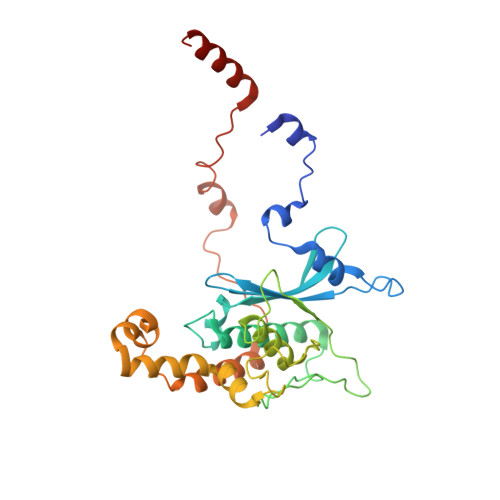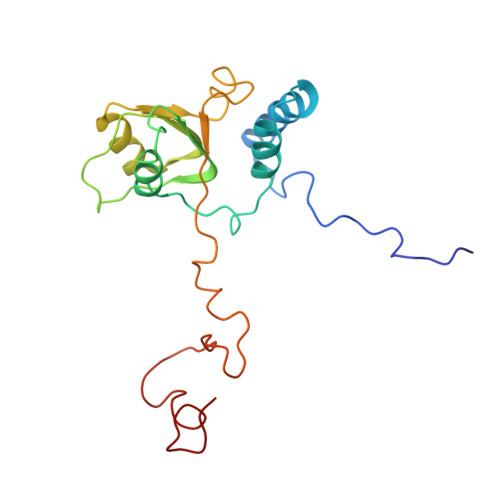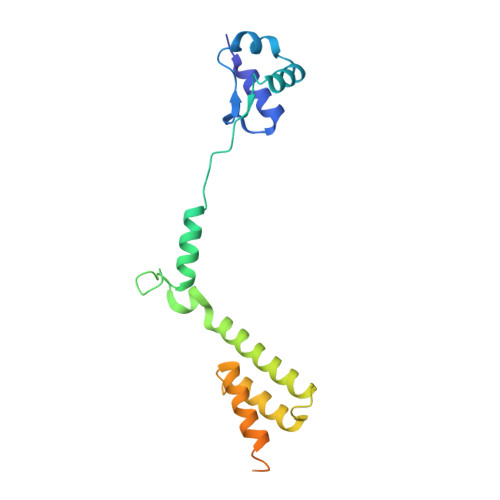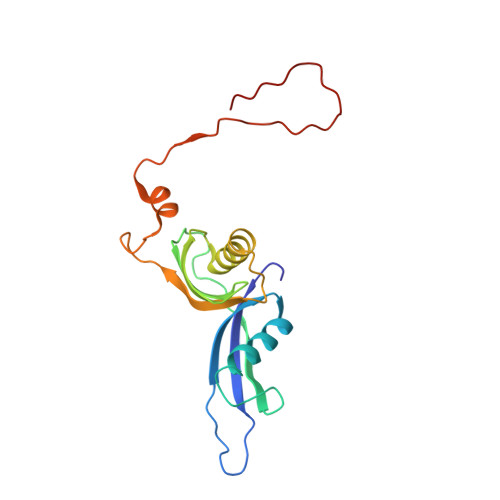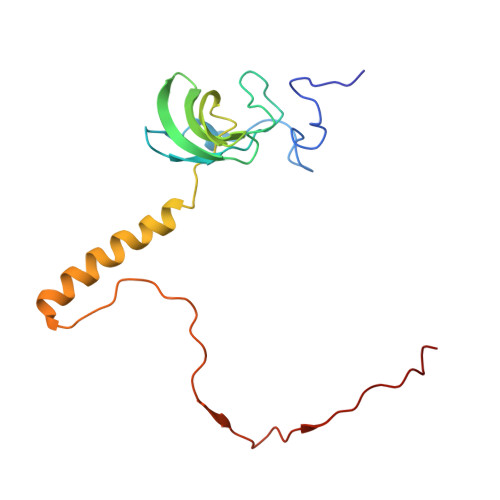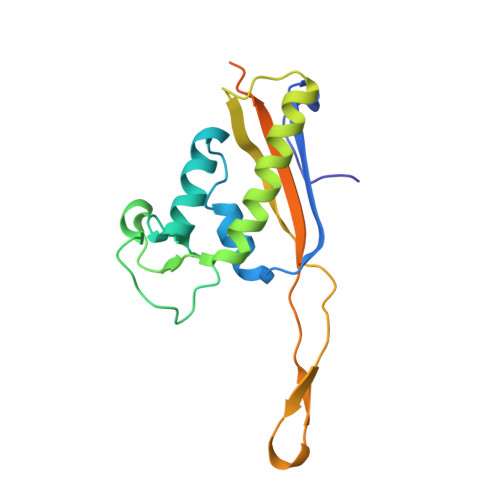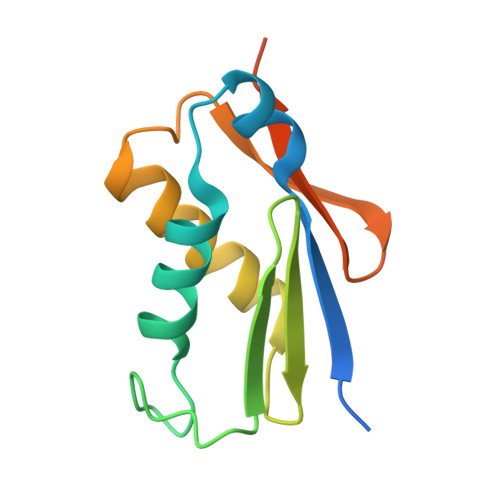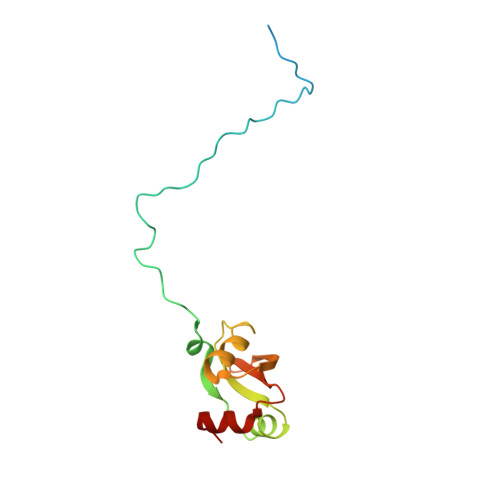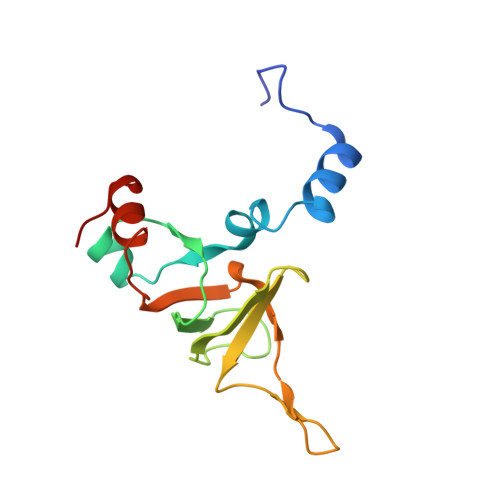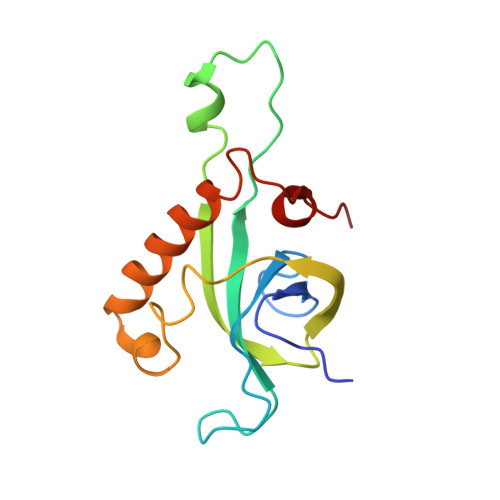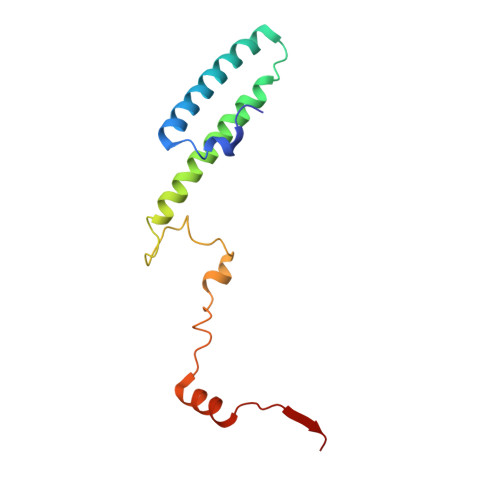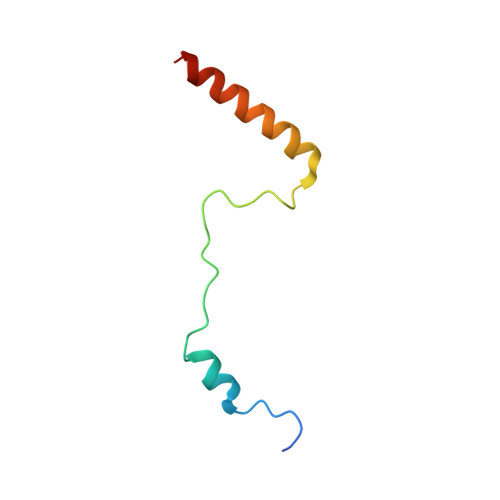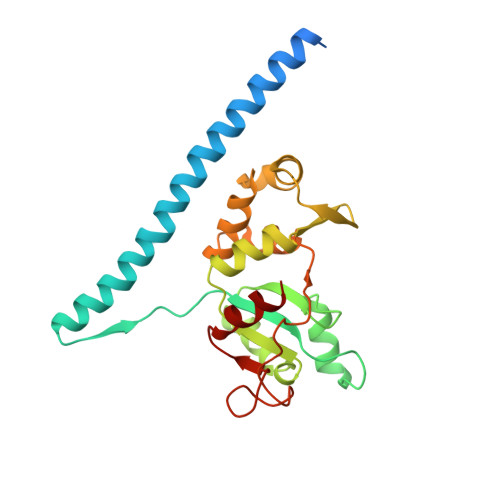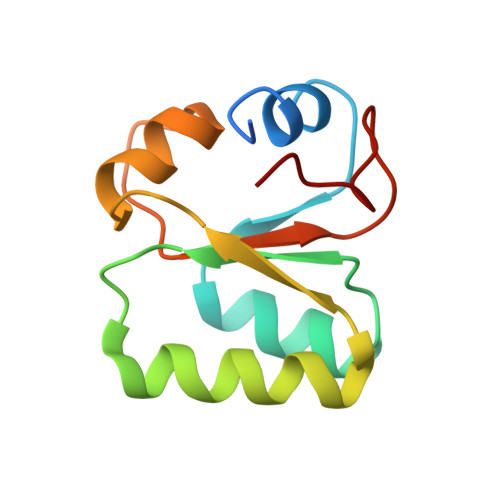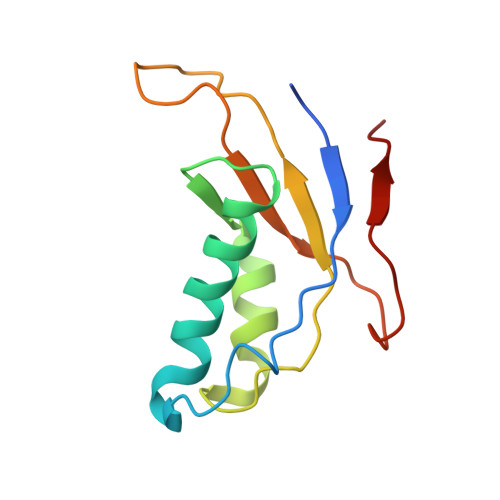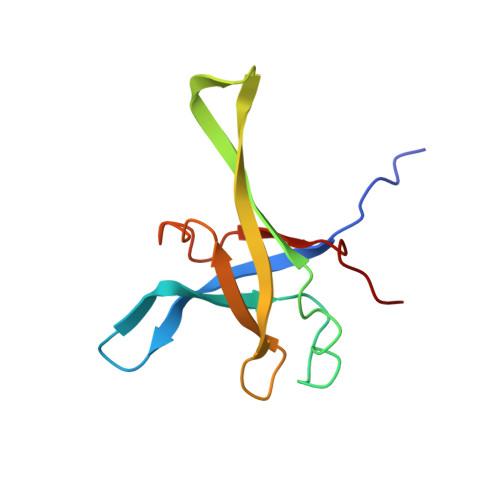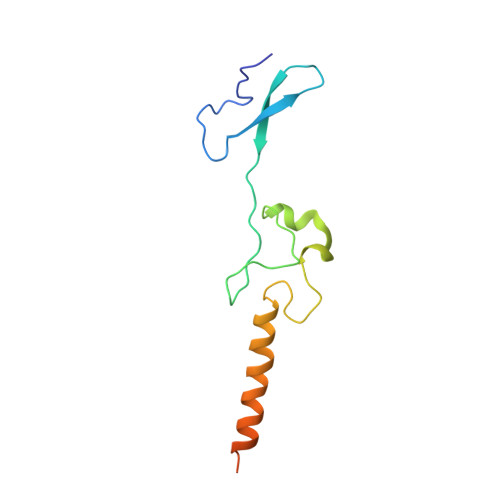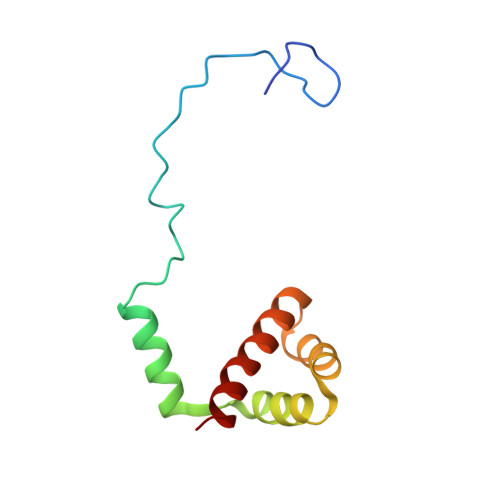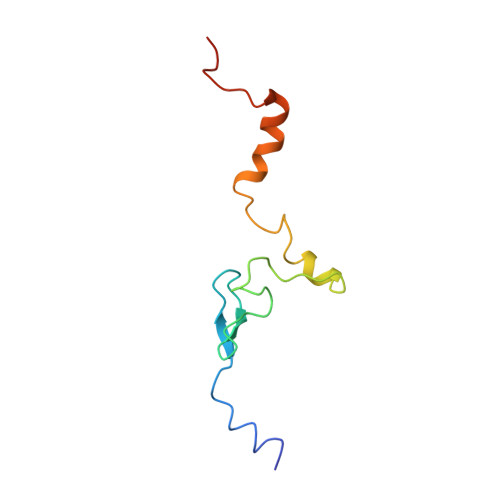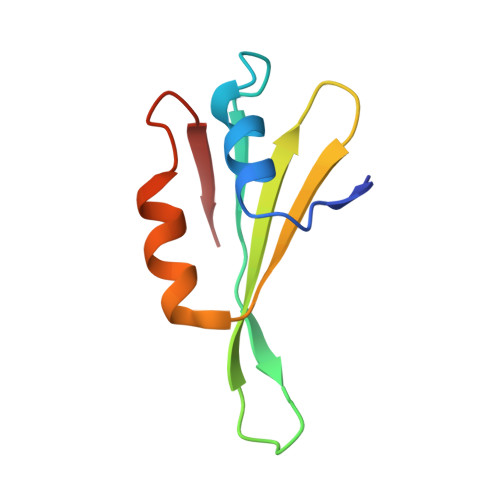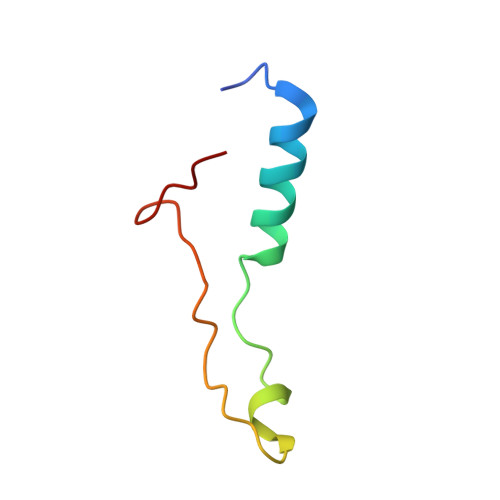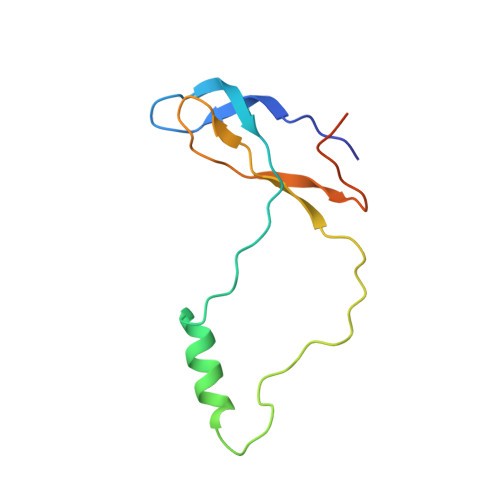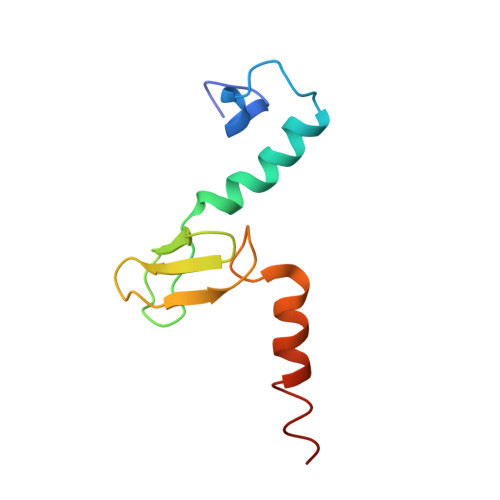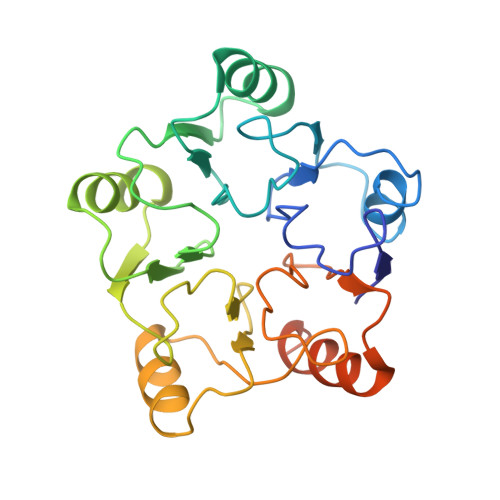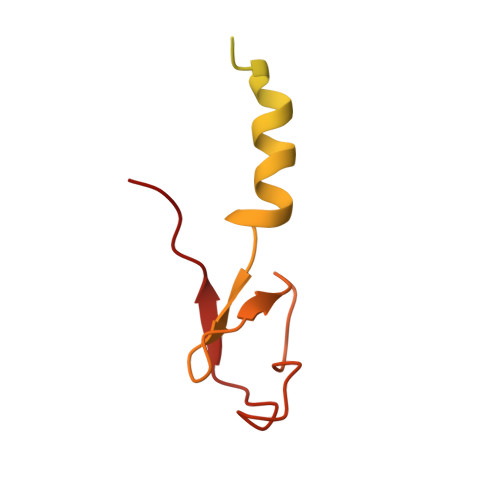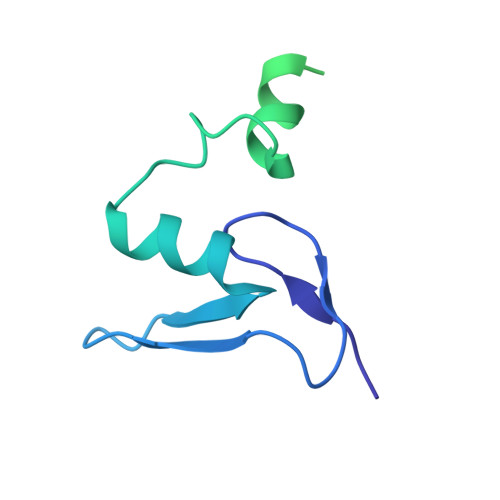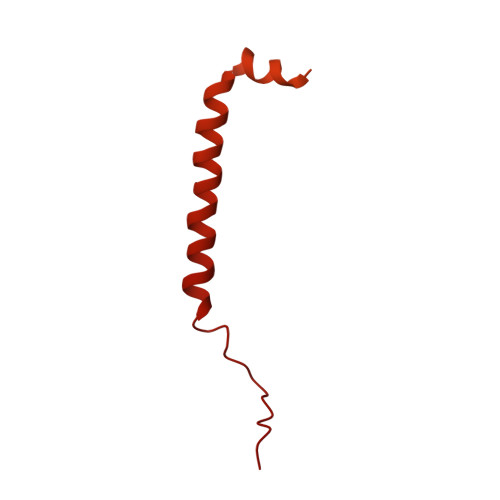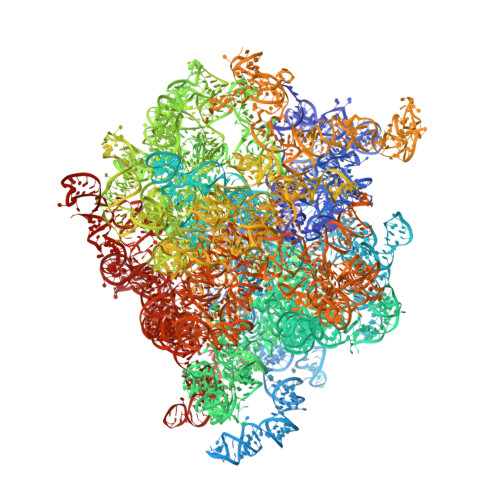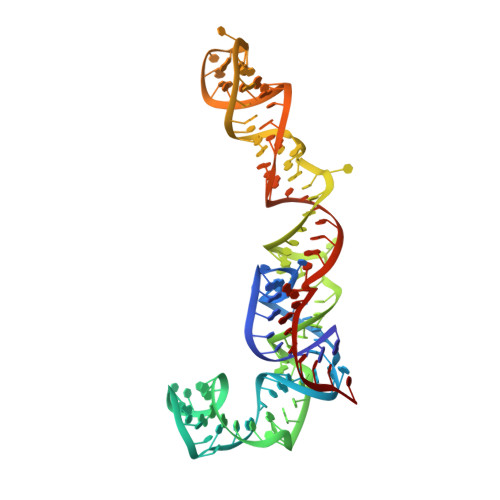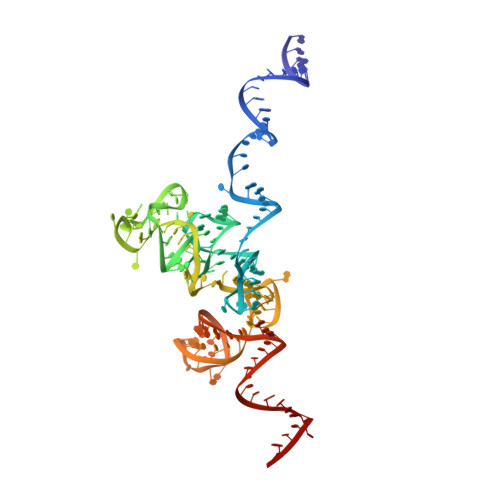Mechanism of completion of peptidyltransferase centre assembly in eukaryotes.
Kargas, V., Castro-Hartmann, P., Escudero-Urquijo, N., Dent, K., Hilcenko, C., Sailer, C., Zisser, G., Marques-Carvalho, M.J., Pellegrino, S., Wawiorka, L., Freund, S.M., Wagstaff, J.L., Andreeva, A., Faille, A., Chen, E., Stengel, F., Bergler, H., Warren, A.J.(2019) Elife 8
- PubMed: 31115337
- DOI: https://doi.org/10.7554/eLife.44904
- Primary Citation of Related Structures:
6QIK, 6QT0, 6QTZ, 6RI5, 6RZZ, 6S05 - PubMed Abstract:
During their final maturation in the cytoplasm, pre-60S ribosomal particles are converted to translation-competent large ribosomal subunits. Here, we present the mechanism of peptidyltransferase centre (PTC) completion that explains how integration of the last ribosomal proteins is coupled to release of the nuclear export adaptor Nmd3. Single-particle cryo-EM reveals that eL40 recruitment stabilises helix 89 to form the uL16 binding site. The loading of uL16 unhooks helix 38 from Nmd3 to adopt its mature conformation. In turn, partial retraction of the L1 stalk is coupled to a conformational switch in Nmd3 that allows the uL16 P-site loop to fully accommodate into the PTC where it competes with Nmd3 for an overlapping binding site (base A2971). Our data reveal how the central functional site of the ribosome is sculpted and suggest how the formation of translation-competent 60S subunits is disrupted in leukaemia-associated ribosomopathies.
Organizational Affiliation:
Cambridge Institute for Medical Research, Cambridge, United Kingdom.










